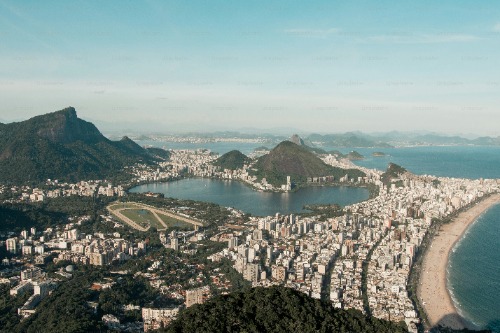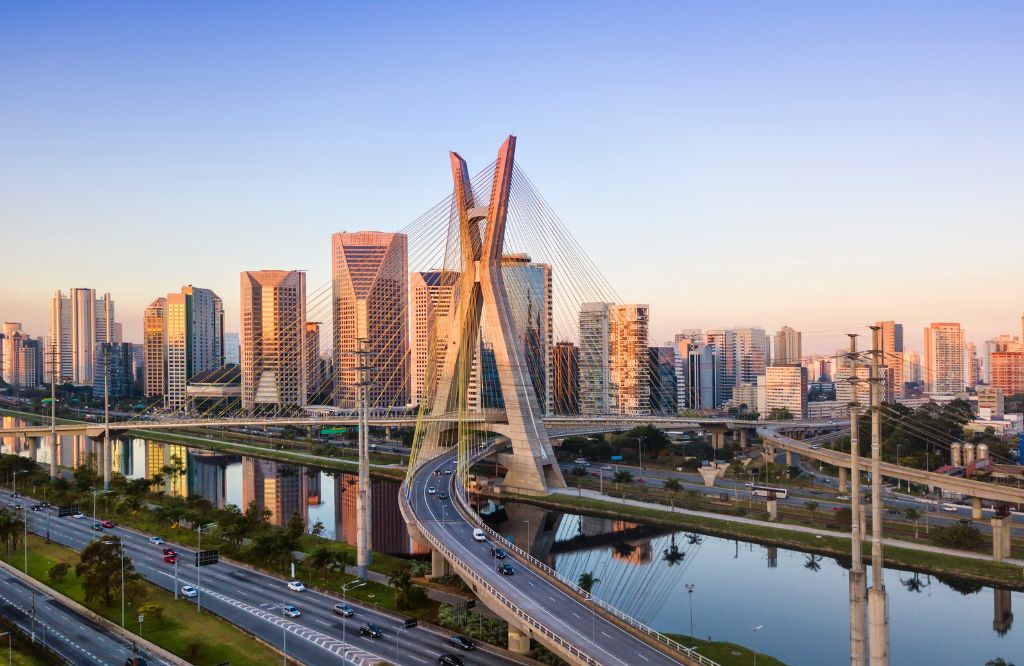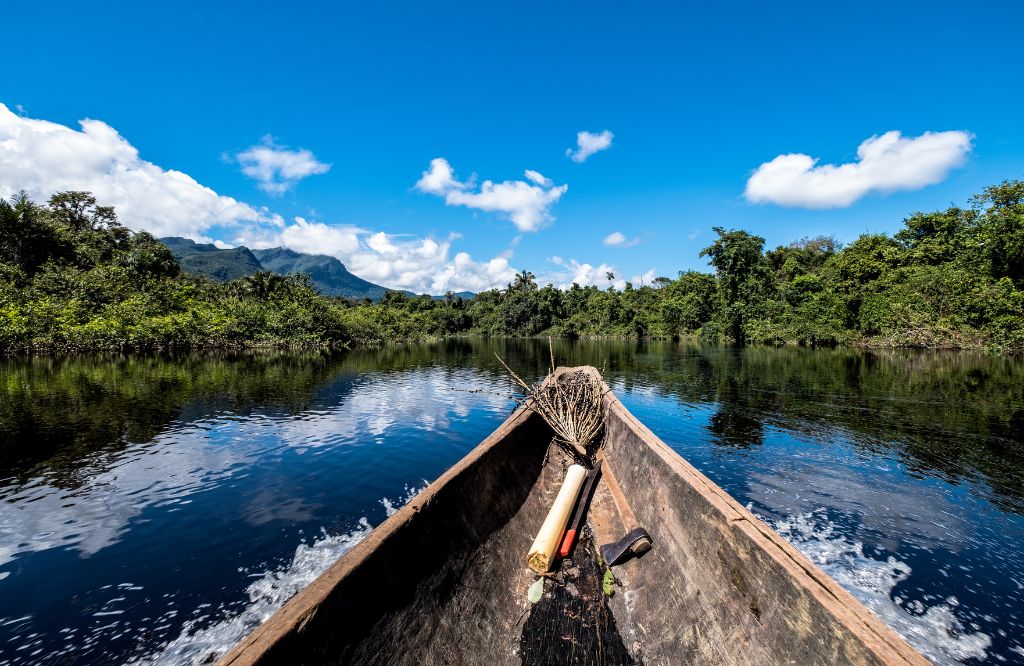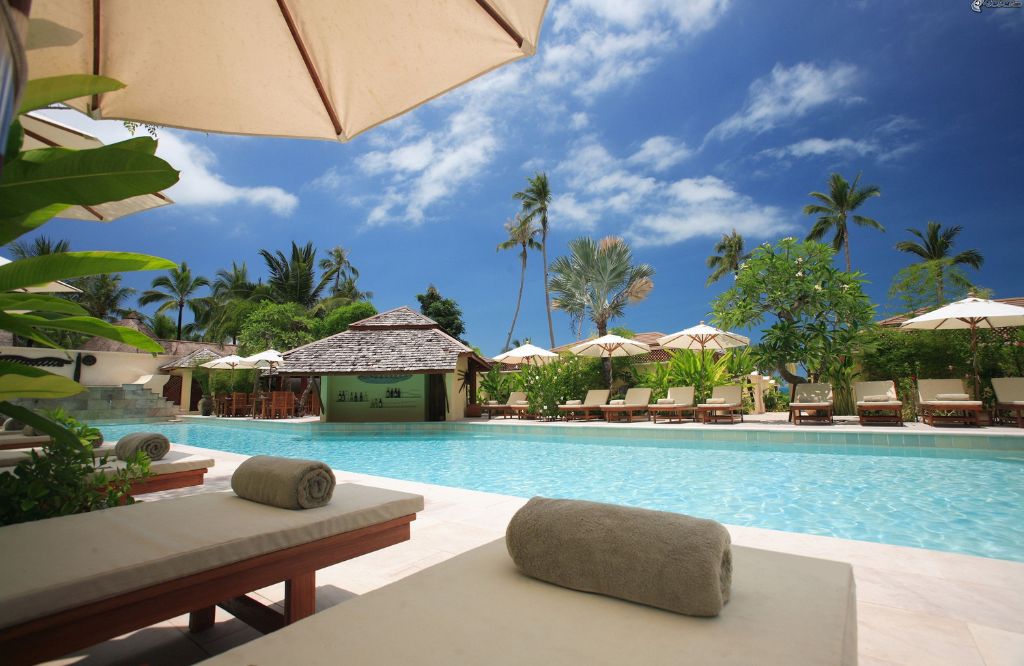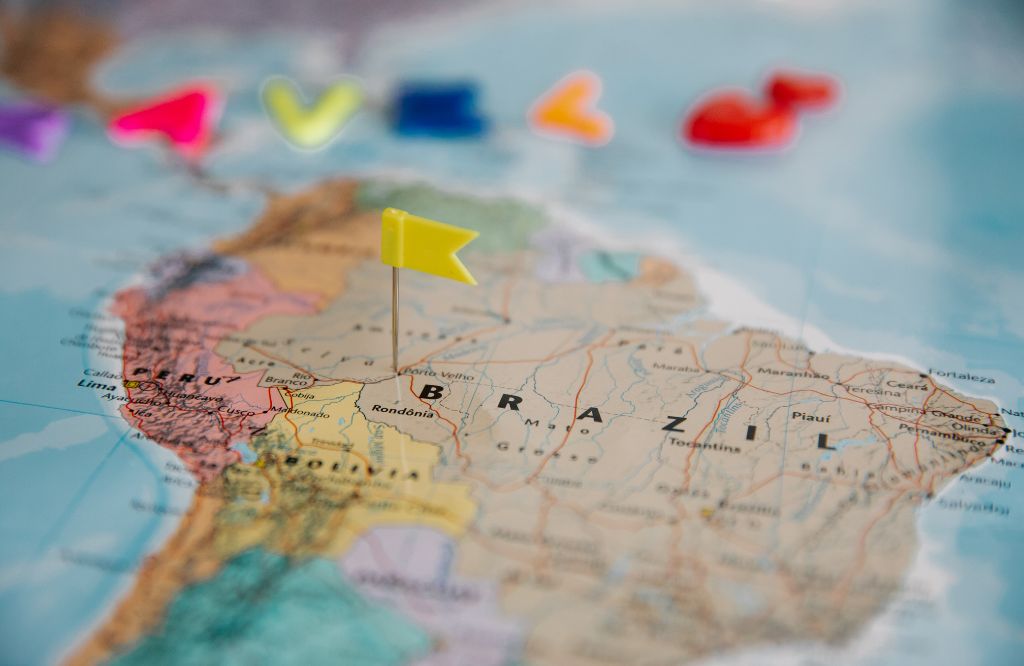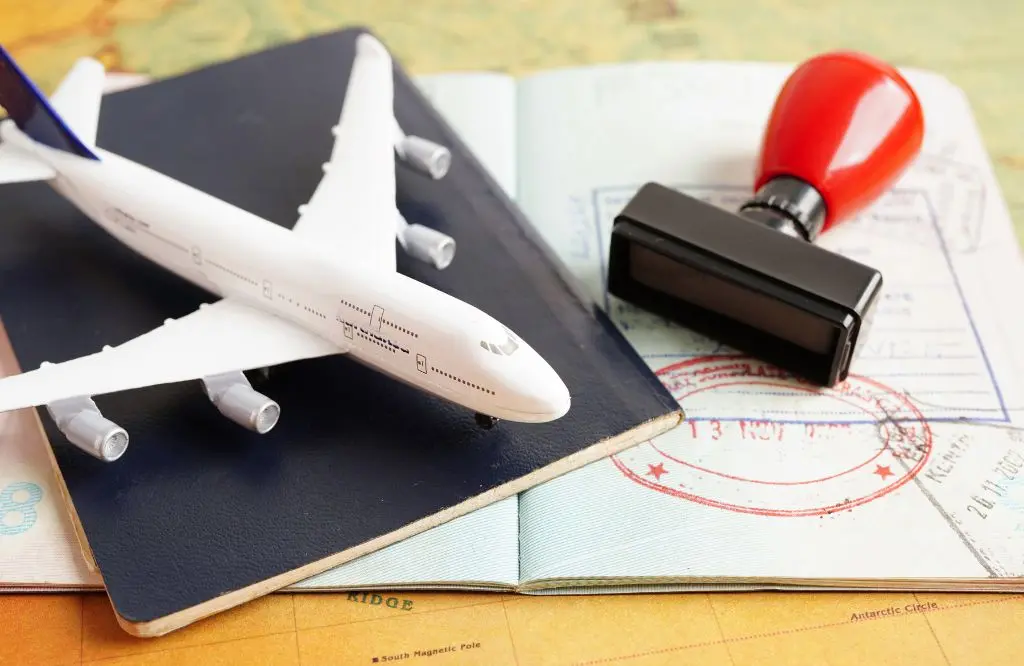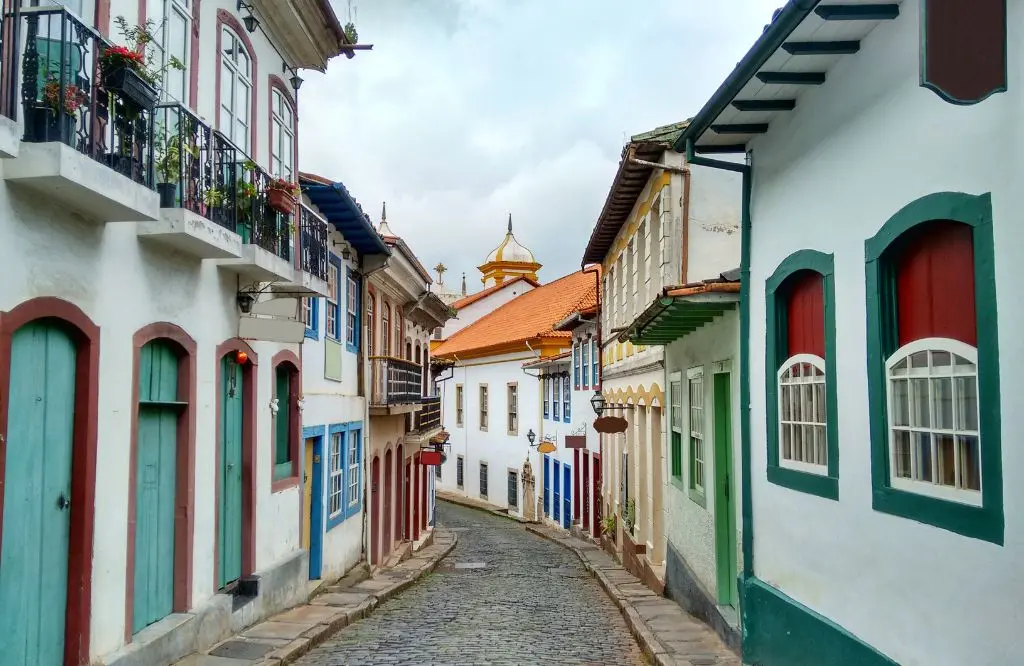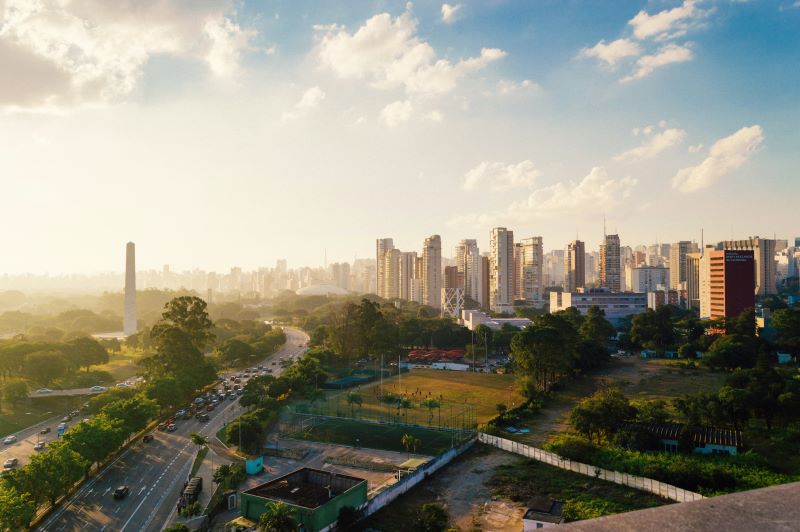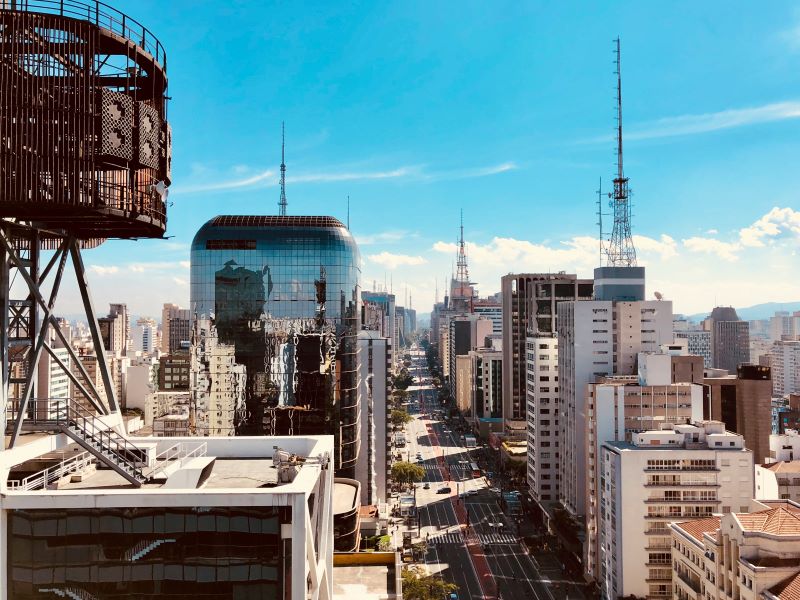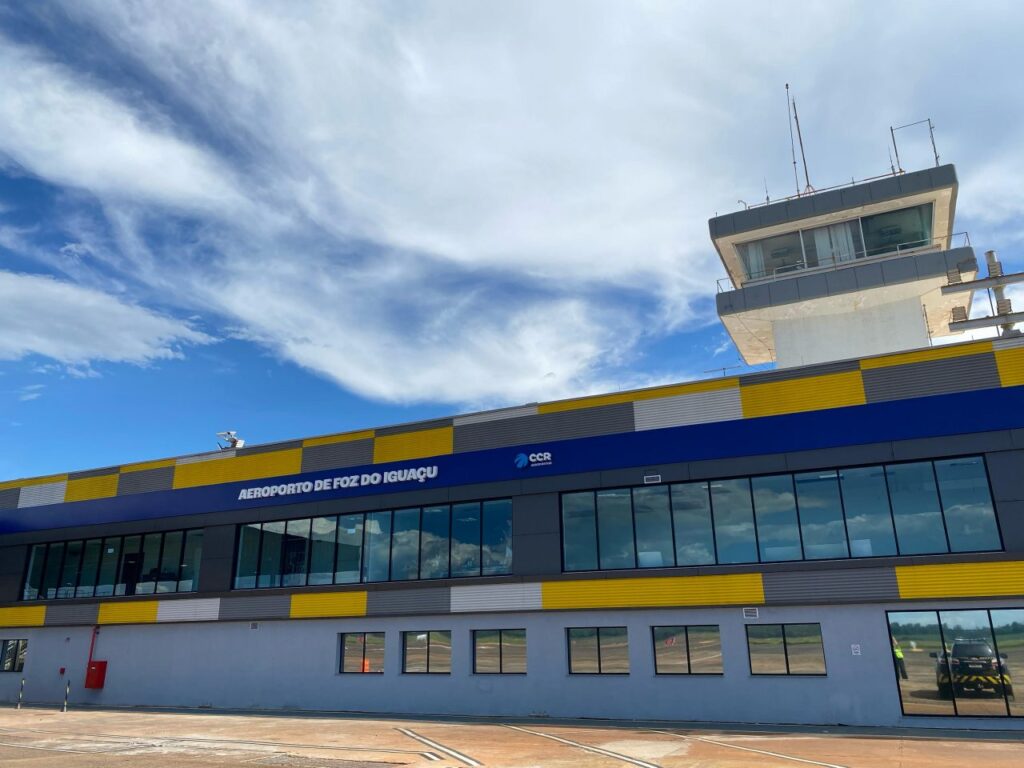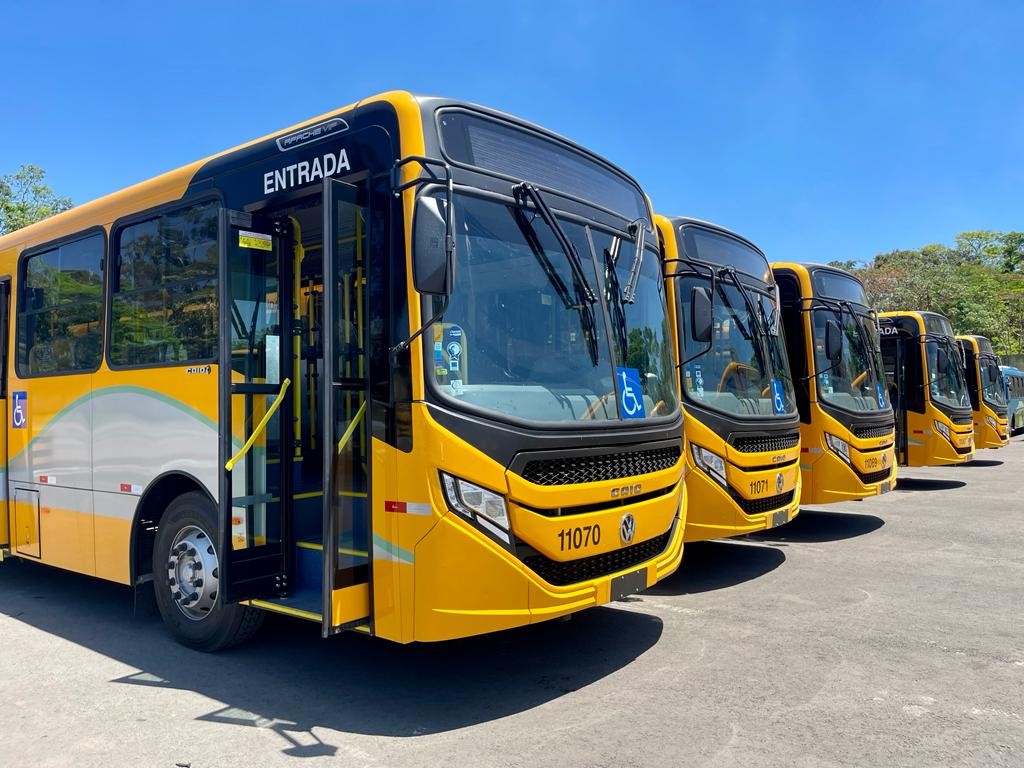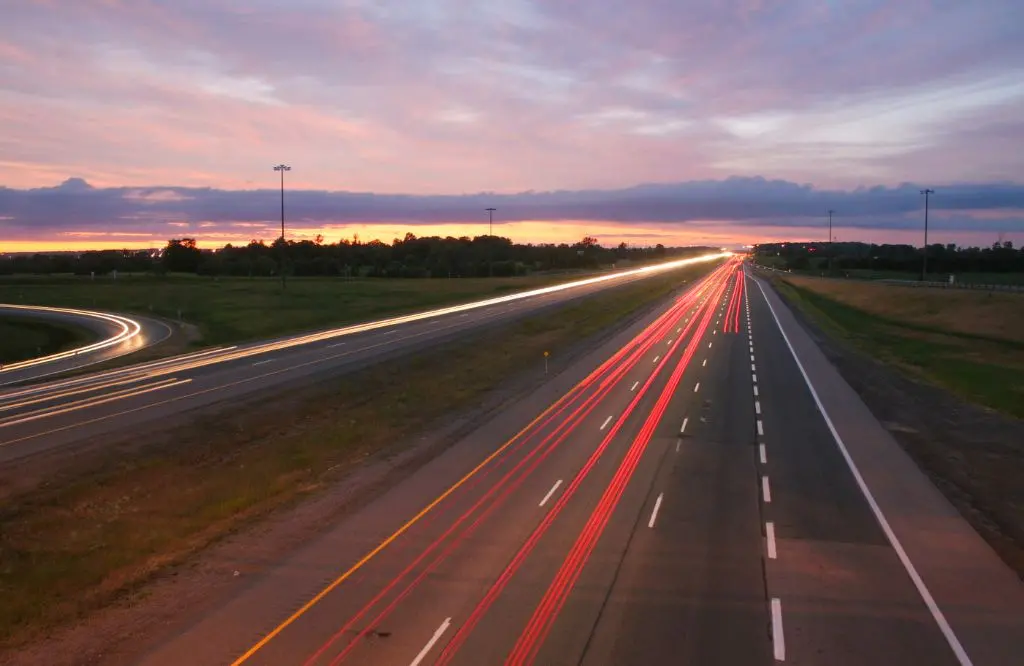
Transportation in Brazil
Here are some transportation options for getting around Brazil:
Air Transportation
Air transportation is the fastest option for covering Brazil’s vast distances. With an extensive network of airports, major airlines offer flights to virtually all regions of the country.
- Main airlines: LATAM, GOL, Azul, and ITA Airways
- Prices: Vary according to route and booking time. Domestic flights can cost from R$200 to R$2,000 or more
- Tips to save: Book tickets in advance, be flexible with dates, use mileage programs
- Main airports: Guarulhos (São Paulo), Galeão (Rio de Janeiro), Brasília, Confins (Belo Horizonte)
Interstate Buses
Brazil’s interstate bus system is well-developed and offers an economical alternative for medium and long-distance travel.
- Main companies: Expresso Brasileiro, Itapemirim, Cometa, Águia Branca, Gontijo
- Prices: Vary according to distance. A trip from São Paulo to Rio (about 6 hours) can cost between R$80 and R$200
- Service types: Conventional, executive, and sleeper
- Advantages: Economical, extensive national coverage, option to carry more luggage
Urban Transportation
In large Brazilian cities, urban public transportation is diverse.
- Metro: Available in São Paulo, Rio de Janeiro, Belo Horizonte, Porto Alegre, Recife, Salvador, Brasília, and Fortaleza
- Municipal buses: Present in all cities. Average fare between R$4 and R$5
- BRT (Bus Rapid Transit): Systems in Rio de Janeiro, Belo Horizonte, and other cities
- LRT (Light Rail Transit): Available in Rio de Janeiro and some other cities
- Transport cards: Bilhete Único (São Paulo), RioCard (Rio de Janeiro), offering integration and sometimes discounts
Taxis and Ride-hailing Apps
Ride-hailing apps have revolutionized the way people move around Brazilian cities.
- Main apps: Uber, 99, Cabify
- Prices: Generally cheaper than conventional taxis. A 10km ride can cost between R$20 and R$40
- Conventional taxis: Available in all cities, with meters. More expensive than apps, but reliable
- Safety: Both options are considered safe, with GPS tracking
Car Rental
Renting a car can be ideal for exploring specific regions with more freedom.
- Main companies: Localiza, Movida, Unidas, Hertz, Avis
- Prices: Starting from R$100 per day for compact cars, up to R$500 or more for luxury models
- Requirements: Valid driver’s license, minimum age usually 21, credit card
- Tips: Check insurance, road conditions, and local traffic rules
Water Transportation
In regions like the Amazon and along the Brazilian coast, water transportation is often the main or only option for getting around.
- Types: Regional boats, ferries, cruise ships
- Popular routes: Manaus-Belém (5-7 days), coastal crossings along the shore
- Prices: Vary greatly. A regional boat trip in the Amazon can cost from R$100 to R$500, depending on distance and comfort
- Experience: Offers a unique view of Brazilian culture and landscape
- Cruise companies: MSC, Costa Cruises (operate mainly along the coast during summer)
Remember that the prices mentioned are estimates and can vary significantly depending on the season, demand, and other factors. Always check the most recent information when planning your trip.
Planning your transportation
Planning how to get around Brazil is crucial for a smooth travel experience. Consider the following aspects when planning your itinerary:
Interstate travel
For long distances, flying is usually the best option, especially if time is an important factor. Buses are excellent for medium routes, offering good value for money.
Exploring cities
In cities, combine the use of public transportation with ride-hailing apps to optimize your time and budget. In some cities, like Rio de Janeiro and São Paulo, there are specific transport passes for tourists that can offer significant savings.
Remote destinations
For more remote destinations, be prepared to combine different means of transportation in Brazil. In some cases, hiring a local guide can not only facilitate access but also enrich your experience with local knowledge.
How to get around in Rio de Janeiro?
Rio de Janeiro offers various transportation options for residents and tourists. The metro is a quick and efficient option for moving between the South and North zones, as well as the city center. Buses cover practically the entire city, including areas not served by the metro. The VLT (Light Rail Vehicle) is a great option for getting around the city center.
For shorter trips or hard-to-reach areas, taxis and ride-hailing apps are widely used. Don’t forget the Santa Teresa tram, a tourist attraction and historical means of transport. For those who like to cycle, there are bike lanes in various parts of the city, especially along the beaches.
How to get around in São Paulo?
São Paulo, Brazil’s largest city, has an extensive public transportation network. The metro is the fastest way to avoid heavy traffic, complemented by a wide bus network. The metropolitan train system (CPTM) connects the center to more distant regions and neighboring cities.
For shorter trips or during peak hours, shared bicycles and electric scooters are popular options. Taxis and ride-hailing apps are always available but can be affected by traffic. For those who prefer to drive, remember that there’s a vehicle rotation system in the expanded center during weekdays. Congonhas Airport, within the city, is connected by buses and taxis, while Guarulhos has executive bus options and a train connection.
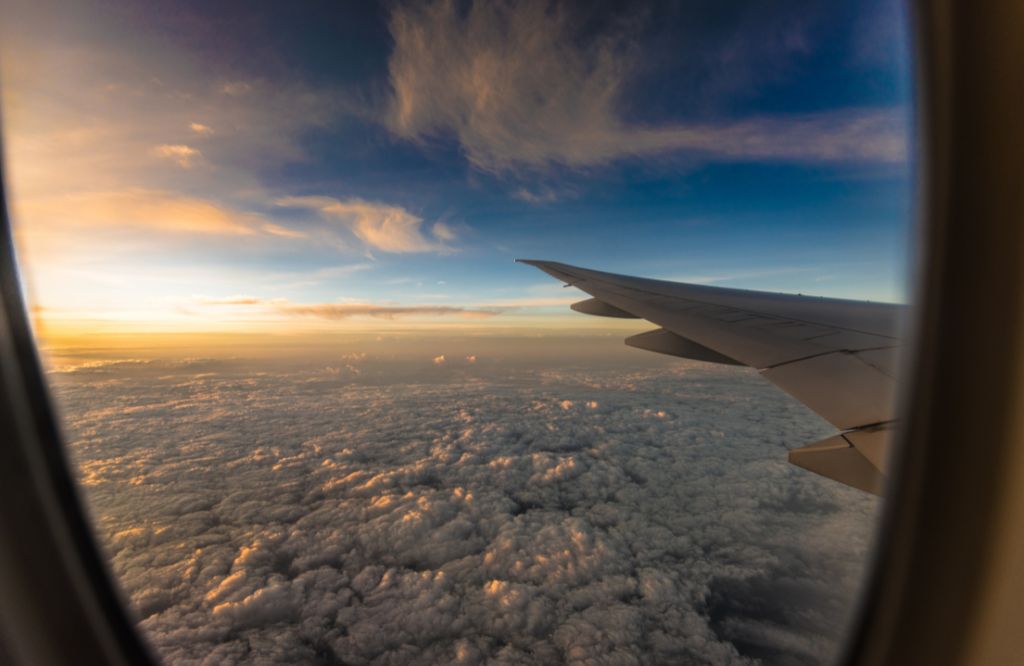
Safety tips
Safety is a valid concern when traveling in Brazil, a country known for its cultural and geographical diversity, but also for challenges in terms of public safety. When moving around Brazil, whether in large metropolises or in more remote areas, it is crucial to be alert and take precautions.
Following some basic guidelines can make a big difference in your travel experience, ensuring that you enjoy everything the country has to offer with peace of mind. Here are some essential tips to ensure your safety when using different means of transportation in Brazil:
- Keep your belongings close at all times, especially on public transport and in busy areas
- Avoid displaying valuable objects such as expensive cameras or jewelry
- When using taxis or ride-hailing services, verify that the vehicle and driver match the information provided
- At night, prefer safer transportation such as ride-hailing apps or official taxis
- Use cross-body bags or front-facing backpacks in busy areas to make theft more difficult
- Be aware of your surroundings, especially in transport terminals and tourist spots
- Avoid using ATMs in isolated locations or during the night
- Keep a digital copy of your important documents stored in the cloud
- Learn about areas considered less safe in the cities you visit and avoid them, especially at night
Saving on transportation
With such a vast territory and varied transport options, there are several ways to save money when moving around the country. The key is to combine different strategies, from choosing the means of transportation to the timing of ticket purchases.
With a little research and planning, it’s possible to significantly reduce transportation costs, allowing you to enjoy more of your budget on experiences and attractions. Consider the following strategies to save money when moving around Brazil:
- Buy air and bus tickets in advance to get better prices
- Compare different transport options – sometimes a flight can be cheaper than a long bus trip
- In large cities, investigate transport passes for tourists
- Consider hostels or hotels close to metro stations or bus stops to reduce local transportation costs
- Use ride-sharing apps to split costs on intercity trips
- Take advantage of airline mileage promotions and loyalty programs
- Travel outside of high season to find lower prices on all types of transportation
- Consider flights with layovers, which are generally cheaper than direct flights
- Explore alternative transportation options, such as bicycle rentals in cities with adequate infrastructure
Accessible transportation
Brazil has made progress in transportation accessibility, although challenges remain. In large cities, many metro stations and some buses are equipped for wheelchairs. When planning your trip, check in advance for the availability of accessible services and, if necessary, contact transportation companies directly to ensure your needs are met.
Sustainability
Conscious travelers can opt for more sustainable means of transportation. Use public transport whenever possible, as it has a lower environmental impact per passenger. In some cities, bike-sharing systems are an ecological and healthy option for short journeys. When renting cars, consider hybrid or electric models, if available. Also remember that traveling more slowly and enjoying destinations for longer not only reduces your carbon footprint but also provides a deeper experience of the place.
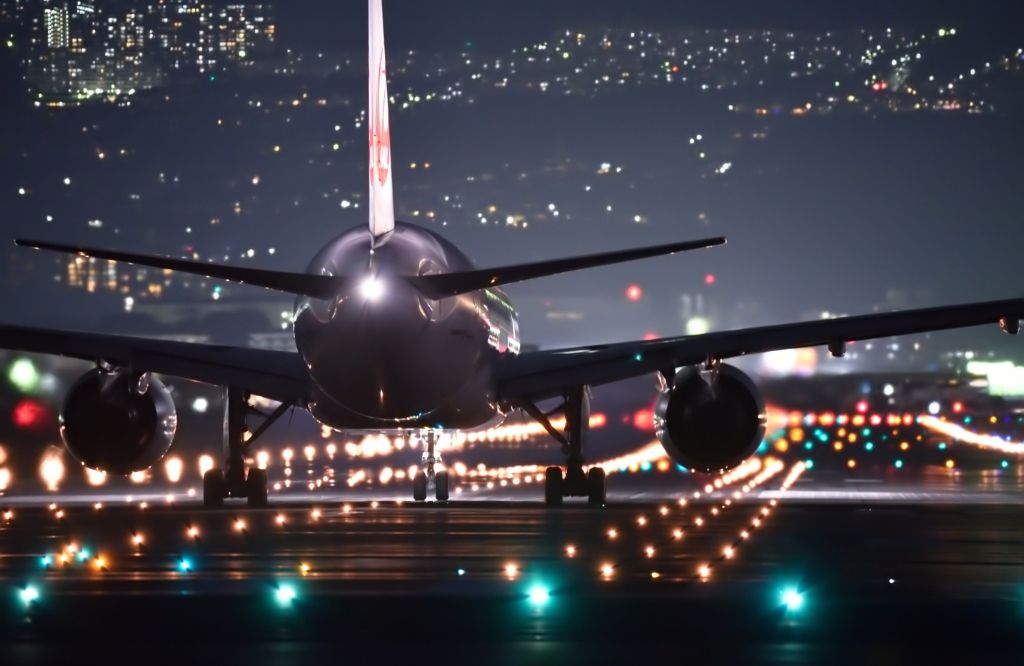
Frequently Asked Questions
Is it safe to use public transportation in Brazil?
Public transportation in Brazil is generally safe, but it’s advisable to remain vigilant, especially in busy areas and during peak hours. Use common sense, keep your belongings close, and avoid displaying valuable items to ensure a smooth trip.
Do I need a visa to drive in Brazil?
To drive in Brazil, you don’t need a specific visa, but it’s necessary to have a valid International Driving Permit (IDP), in addition to your driver’s license from your home country. Make sure both documents are within their validity period.
What’s the best way to travel with children in Brazil?
To travel with children in Brazil, opt for means of transportation that offer comfort and safety, such as rental cars with appropriate child seats or direct flights for long distances. In cities, use ride-hailing apps that offer options for children. Plan frequent stops on long trips.
Are interstate buses comfortable for long trips?
Interstate buses in Brazil vary in comfort, but many companies offer executive and sleeper options with reclining seats, air conditioning, and on-board bathrooms. For long trips, choose premium services that generally provide a more comfortable and pleasant experience.
Can I use my driver’s license from my home country in Brazil?
Tourists can use their driver’s license from their home country in Brazil for up to 180 days, as long as it’s valid and accompanied by a sworn translation or an International Driving Permit (IDP). After this period, it’s necessary to obtain a Brazilian license.
Are there transport passes for tourists in major cities?
Yes, many of Brazil’s main tourist cities offer specific transport passes for tourists. These passes generally allow unlimited travel for a set period and may include access to metro, buses, and in some cases, even tourist attractions.
How does the metro system work in large Brazilian cities?
Metro systems in large Brazilian cities, such as São Paulo and Rio de Janeiro, are modern and efficient. They generally operate from 5 AM to midnight, with short intervals between trains. Tickets can be purchased at stations, and there are rechargeable card options for multiple trips.
Is it possible to rent cars in all tourist cities in Brazil?
Most tourist cities in Brazil have car rental services, especially at airports and central areas. However, in smaller or more remote destinations, options may be limited. It’s advisable to make reservations in advance, especially during high season.
What are the rules for luggage on domestic flights?
Luggage rules for domestic flights in Brazil vary by airline. Generally, one carry-on bag of up to 10 kg and specific dimensions is allowed. For checked baggage, policies may include one free bag or additional charges, depending on the chosen fare.
How does water transportation work in the Amazon region?
Water transportation in the Amazon is essential and includes regional boats, fast boats, and ships. Trips can vary from a few hours to several days, depending on the destination. It’s common to sleep in hammocks on regional boats. Check safety and comfort conditions before boarding.

